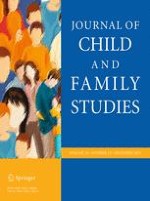07-04-2015 | Original Paper
Attachment Style and Relationship Difficulties in Parents of Children with ADHD
Gepubliceerd in: Journal of Child and Family Studies | Uitgave 12/2015
Log in om toegang te krijgenAbstract
Previous studies report that parents of children with ADHD often experience difficulties in their couple relationship. The present study investigated the role of adult attachment style in relation to problems with dyadic adjustment and conflict communication. A cross-sectional design was employed, involving 98 parents of children and adolescents with ADHD and 153 parents of offspring without the disorder (age range in 3–19). Participants completed the following: Experiences in Close Relationships Questionnaire-R, Communications Pattern Questionnaire, Dyadic Adjustment Scale, and Conner’s Parent Rating Scale–48. According to the findings, the two parental groups differed regarding relationship difficulties only when attachment style was controlled for. Moreover, attachment avoidance moderated the impact of having a child with ADHD on dyadic adjustment while attachment anxiety moderated such an impact on conflict communication. Also, parents of children with less severe ADHD symptoms were more likely to experience relationship problems, while having a child with ADHD moderated the effects of gender on the roles taken in demand-withdraw communication. Considering adult attachment style may provide useful insights into how parents of children with ADHD relate to each other and may inform supportive interventions.
